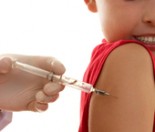This article explains why some children get urinary tract infections (UTI), how to treat UTI and some great advice on preventing urinary tract infections.
What is a urinary tract infection?
A Urinary Tract Infection or UTI is fairly common in children. It’s been estimated that by age five around 8% of girls and 2% of boys will have contracted a UTI.
In younger children and infants, UTIs may be hard for parents to detect. The child may be generally unwell or off colour, perhaps irritable or have a high temperature. In some children, the only symptom may be a fever.
Older children will cry or complain of pain when passing urine – or you may find they are wetting themselves or the bed.
A UTI in a child needs proper examination and early detection and treatment. Left untreated, UTIs can lead to serious kidney problems.
In children, a UTI may be one of the first signs that there is something abnormal with the urine system. A UTI in a child can also be a symptom of sexual abuse.
How the urine system works
The urine system is comprised of two kidneys that filter and remove waste from the body. The body then transports urine from the kidneys to the bladder via the ureters – two tiny tubes.
Urine collects in the balloon-like bladder and is then transported via another tiny tube, the urethra, to the outside of the body for excretion.
The urethra in girls in just in front of the vagina; in boys, it is at the end of the penis.
Normally urine contains no bacteria. When bacteria or other microorganisms enter the urethra they cause irritation and inflammation – this inflammation can then back track to the bladder and, if left untreated, track even further back to the kidneys.
Infections can be caused by bacteria (normally E.coli) travelling from the anus to the urethra. E.coli normally live in the colon. Other bacteria, viruses and microorganisms can also cause UTIs.
UTIs occur much more frequently in girls because their urethra is closer to the anus than in boys and also the urethra in girls is much shorter in terms of its length to the bladder than boys. Uncircumcised boys have a slightly higher incidence of UTI’s.
An infection of the urethras is called urethritis.
An infection of the bladder is called cystitis.
An infection of the kidneys is called pyelonephritis .
What are the signs and symptoms of urinary tract infection?
In younger children and infants:
- Irritability
- Loss of appetite
- Generally unwell
- Nausea
- Vomiting
- Fever
In older children also:
- Complaints of pain in the pelvis
- Pain in the lower back where the kidneys are
- Pain or crying on passing urine
- Needing to pass urine frequently
- Needing to wake up often during the night to go to the toilet
- Wetting clothes or the bed
- Smelly, cloudy or even blood-stained urine
Treatment for UTI
- The doctor will examine your child, take a history and order a urine test for analysis
- UTI’s are treated with antibiotics – most clear up within a week
- Parents need to ensure that the complete course of antibiotics is finished – don’t stop them early which can allow bacteria to grow back even stronger
- If your child is very ill with a UTI they may have a kidney infection – which could necessitate treatment in hospital with intravenous antibiotics
- If the UTI is difficult to treat, or returns repeatedly, your doctor may order further tests to check for any abnormalities in the urinary system – this can involve x-rays and ultrasound exams
- UTI’s may be indicative of problems in the urinary system such as – vesicoureteral reflux (VUR) where urine flows backward from the bladder to the kidneys; obstructions due to kidney stones or malformations of the urinary system; dysfunctional voiding – holding or straining when passing urine that causes problems
- Some recommendations suggest deeper investigation of UTI’s are required when any girls over 5 have had 2 or more urinary infections; any boys with their first UTI; any children under 5 with their first UTI and all children who have fever with a UTI.
Risks & complications of urinary tract infections
Things that can put your child at risk of developing a UTI include:
- Poor toileting habits
- Always `holding on’ rather than going to the toilet when they need to – holding urine allows bacteria to grow
- Using bubble baths or soaps that irritate the urethra
- A family history of UTI’s
- Abnormalities in the urinary system such as a malformed kidney or reflux
- Diabetes
- Any disorders that suppress the immune system
Complications of untreated UTIs include:
- Repeated UTIs
- Kidney infections – both acute and chronic
- Permanent kidney damage
What can I do to prevent UTI?
- Teach children good toileting hygiene – not to `hold on’ when they need the toilet
- Teach girls to wipe from the front to the back after passing urine so they don’t spread bacteria from the anus toward the urethra
- Change infants nappies promptly when wet, to prevent spread of bacteria
- Children – and especially girls – should wear cotton rather than nylon underwear
- Ensure children have a good fluid intake
- Ensure children’s diets have sufficient vitamin C by including fruits and vegetables
- Cranberry juice also helps fight a urine infection
- Remember to include acidophilus yoghurt in your children’s diet whenever they are on antibiotic treatment to ensure gut bacteria stay healthy
Helpful articles
Check out our Kiwi Families article on Urinary Tract Infections in Adults.
For more information on helping your child to overcome Fever, click here.








hey thax..u help me a lot doc!be blecd